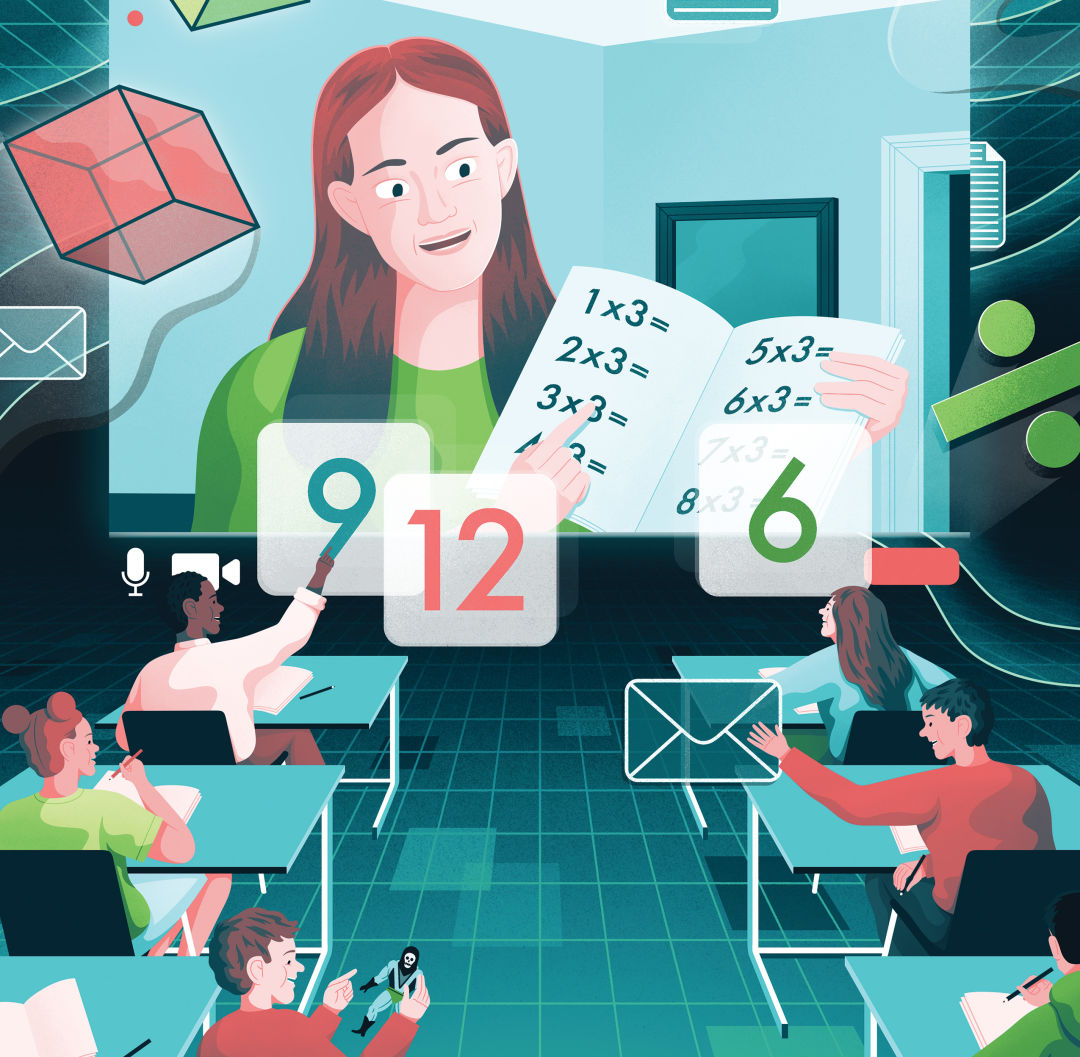How COVID-19 Has Impacted Students With Neurological Disabilities

Image: Jacob Stead
Last spring, administrators and teachers alike found themselves scrambling to suddenly adapt their curricula to fit the challenges of the COVID-19 pandemic. In a matter of days, they needed to create new methods of communicating with students, parents, and one another, as well as adapt activities to virtual spaces. The ones who had to remain in the classroom faced the additional pressure of ensuring everyone followed the CDC’s seemingly ever-changing sanitizing guidelines.
For students with cognitive and neurological conditions, the abrupt changes in routine raised questions of accessibility. Would the new normal ensure they received an equitable education? Could their needs still be met at home?
“We went from complete one-on-one and in-person to completely virtual. My students had never picked up a computer before this, most of them,” says Kristin McClintock, a structured learning teacher at Westside High School who works with students with autism and cognitive disabilities. “I think we all struggled. In March of last year, it was definitely a disaster. Nobody knew what anybody was doing.”
The Houston Independent School District didn’t want to leave students with accessibility requirements behind and made them their priority when providing the necessary technology, such as tablets, screen modifiers, touchscreens, and text-to-speech tools. Although frustrated by the potential harm caused to the students by the adjustment, McClintock says that in the end she “was surprised at how well it worked.”
At The Monarch School and Institute for neurodiverse students from pre-K to adulthood, Head of School Patricia Pace notes that they had to be “very, very proactive” when designing their COVID-19 protocols, especially since the kids were used to individualized attention (the student-to-faculty ratio is 2.5 to 1). In March 2020, the faculty began preparing remote learning plans in the event that lessons needed to be moved online for everyone’s safety.
“We thought it might be only a couple of weeks… As it got closer to the Friday before spring break, we realized there was going to be a problem, so we started working on remote learning almost immediately,” Pace says. “Sure enough, by the time spring break was over, we never returned to face-to-face until the middle of the summer when we opened for summer programs.”
In addition to teachers, Monarch School’s faculty consists of occupational therapists, speech pathologists, and other specialists trained to make education accessible to neurodiverse students. For the youngest students in particular, the transition away from an environment where they could work one-on-one with a trusted adult was especially difficult.
Pace says, “Their best mode of learning is face-to-face with a teacher who loves them, and they trust and they work together. Suddenly we didn’t have that and we had to be very, very creative to keep our kids connected to the greater community.”
Solutions included virtual field trips to places like the Houston Zoo, as well as “Wacky Wednesdays” where students and teachers could share in simple delights like silly socks to nurture relationships. “We had those shared experiences, which are really important,” Pace says.
However, for 7-year-old William (name changed to protect the identity of a minor), a student at McNeill Elementary who requires accommodations for his ADHD and anxiety, the rapid switch to Zoom classes felt “very weird” because “a lot of changes kept happening.” He notes problems with classmates unmuting themselves at inappropriate times and believes that the only advantage of attending school from home is that he “could get up and go to the bathroom without asking.”
William struggles with transitions, says his mother, Lisa. “Some of those changes were hard on him. It was very clear that this was not going to be a success because he was home. He knows where all the toys are. We didn’t have a great ‘alone area’ for him to attend school where I could watch him.”
While she admits that “in some ways, the Zoom was nice because when he was done, he was done,” ultimately Lisa believes that her son benefits more from a physical classroom environment.
William agrees. “My body tells me that it prefers the classroom. I feel comfortable. I’m not nervous about something… I have anxiety. When I get nervous, my hands start shaking and my tummy starts hurting,” he says. “Sometimes I get anxiety when I’m on the computer because … I’m not moving my body. What if something real serious happens? Since I’m not moving my body, I can’t move quickly. I don’t want to get hurt.”
The transition back to in-person learning has led to some changes in how educators will approach lessons moving forward.
McClintock spent the first three weeks of lockdown teaching students (and some parents) about computer basics. All but one of her students will be returning to the physical classroom, and she wants to dedicate a portion of every day to maintaining the computer skills they developed remotely. For some students, email and other tools they picked up over the past year helped them find more comfortable ways to communicate.
The Monarch School began allowing students back into the classroom in summer 2020 but plans to fully integrate a hybrid online/in-person system this fall. So anyone needing to stay at home due to COVID-19 or another illness doesn’t have to feel disconnected from the school and the support system that it provides. Monarch will also adopt a “revolving door” policy where students may switch between online or in-person learning based on their comfort level.
“I think any administrator in any system would tell you it was not easy to navigate. But we did our best, just like I’m sure everybody else did,” says Pace.
